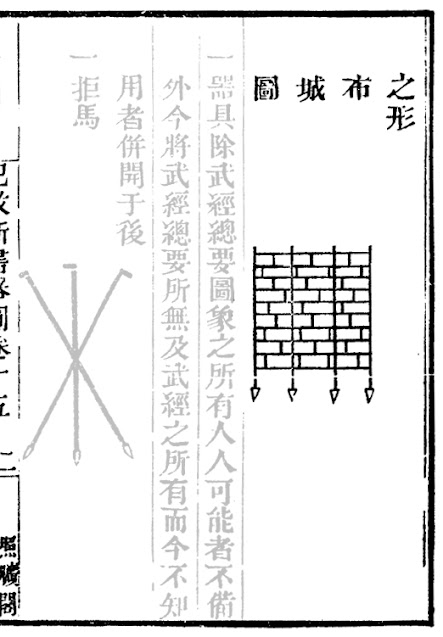 |
| Drawing of a Bu Cheng (highlighted), from 'Ji Xiao Xin Shu (《紀效新書》)'. |
While nothing more than a piece of brick-textured double-layered clothe supported by four wooden poles, Bu Cheng is nevertheless an effective tool, as it can be deployed within minutes at practically everywhere, even before the enemy's eyes. Bu Cheng does not protect those behind it directly, but conceals their position and serves as an obstacle. It can also serve as decoy camp when deployed alone.
To prevent enemy troops from simply tearing it down, Bu Cheng is always deployed together with cheval de frise and caltrop. It can also be reinforced with cotton blanket to defend against arquebus rounds. A combination of blanket-reinforced Bu Cheng, chevaux de frise and caltrops can quickly turn a vulnerable position into a well-defended field fortification.
No comments:
Post a Comment